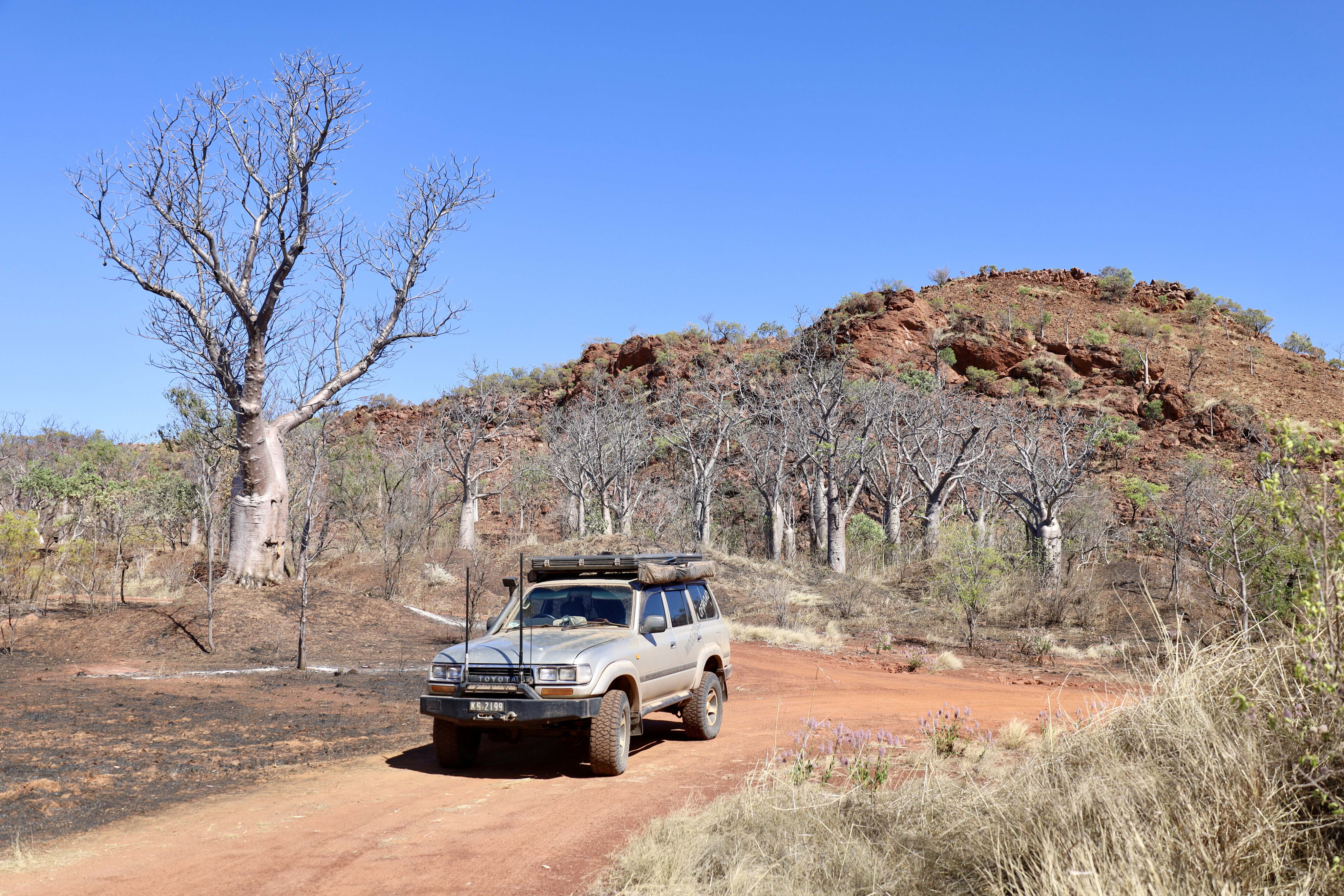
After a month on the Gibb River Road I was looking forward to getting into Wyndham for some decent food, a shower and to relax in town.
I had been enjoying the Karunjie Track, with its amazing history and stunning scenery, before I popped onto the King River Road and after that it wasn’t long before I hit the tar heading into Wyndham.
To be honest, I wasn’t expecting too much around the Wyndham area, but boy was I surprised with what the town had to offer, so after booking into the local caravan park I headed off to explore the sights and sounds.
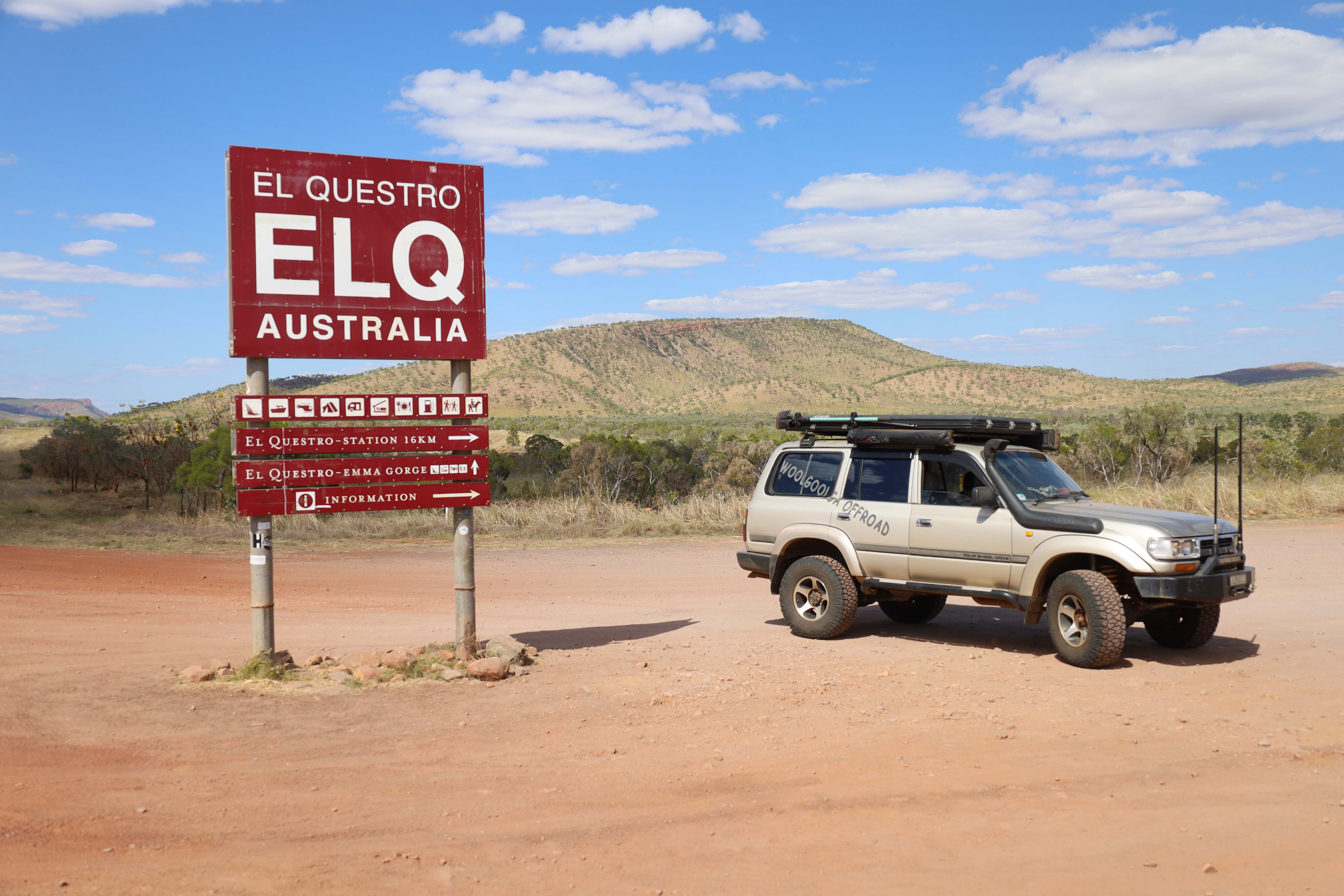
In an around Wyndham
My first port of call was Wyndham’s Five Rivers Lookout just a few miles out of town.
Aptly named for what you can view from the lookout, which is five rivers draining into Cambridge Gulf; the Ord, Durack, Pentecost, Forrest and King rivers. The massive waterway the rivers flow into not only provides an exit out to the gulf, but allows for recreational and commercial fishing.
You’ll find day facilities at the lookout as well as an information board outline the history of Wyndham. It states that the first indigenous people arrived in the area about 45,000 years ago, and that they lived throughout the Top End, with their descendants still living in the local area.

The first contact with white Europeans was in 1819 when Captain Phillip Parker King surveyed the coastline and named the Cambridge Gulf after the then Duke of Cambridge.
It wasn’t until 1879 that cattle pioneers looking for good country visited the area, and not long after gold was found to the south at Halls Creek in 1884. Wyndham was proclaimed as a town soon after and the construction of a meatworks and an export wharf were soon in the works. Wyndham was the main export port for cattle throughout the whole Kimberley region.
Down below the Five Rivers Lookout is the site where Wyndham was originally situated but in 1942 the town was evacuated for the fear of being bombed by the Japanese. The only casualty was the WA ship Koolama that eventually sank in the river.

The meatworks and other port industries continued for another 40 years but until the remaining businesses closed down due to economic hardship.
Today the port is used for shipping out iron ore, cattle, fuel and general freight, while Wyndham is now 10km away, built on solid ground away from the mudflats and massive wet-season tides.
Around town there’s plenty more to explore. Head out along the King River Road and you’ll find the Boab Prison Tree in which Aboriginal prisoners were locked up overnight before facing the courts at Wyndham. Just past the tree there is some exquisite and fascinating rock art.
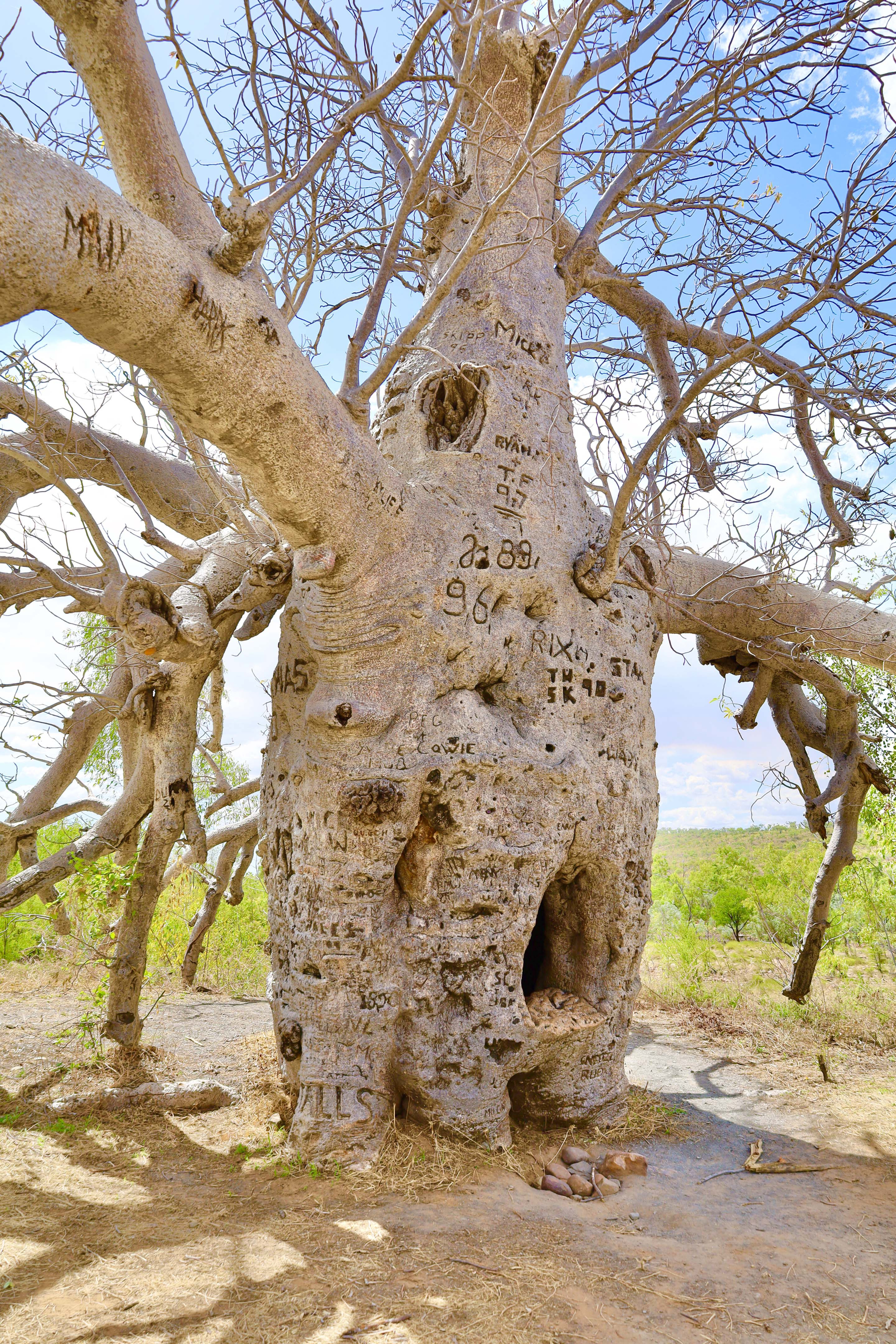
To the east you will find Parry Lagoons Nature Reserve and Marlgu Billabong, which is a permanent waterhole where dozens of different species of birds can be spotted, as well as several large saltwater crocs. This area is easily accessible in the dry season.
Overlooking Parry Lagoons Nature Reserve is a radio and telegraph station that was built in 1914 to assist with ships entering the harbour, as well as being used throughout WWI for naval intelligence. This station assisted in the tracking and sinking of the German ship SMS Emden.
After its closure, the station building was relocated to the Wyndham port precinct and used as the postmaster’s house, where it still stands today. The only relics left at the telegraph station site are the foundations of the building and water tank.
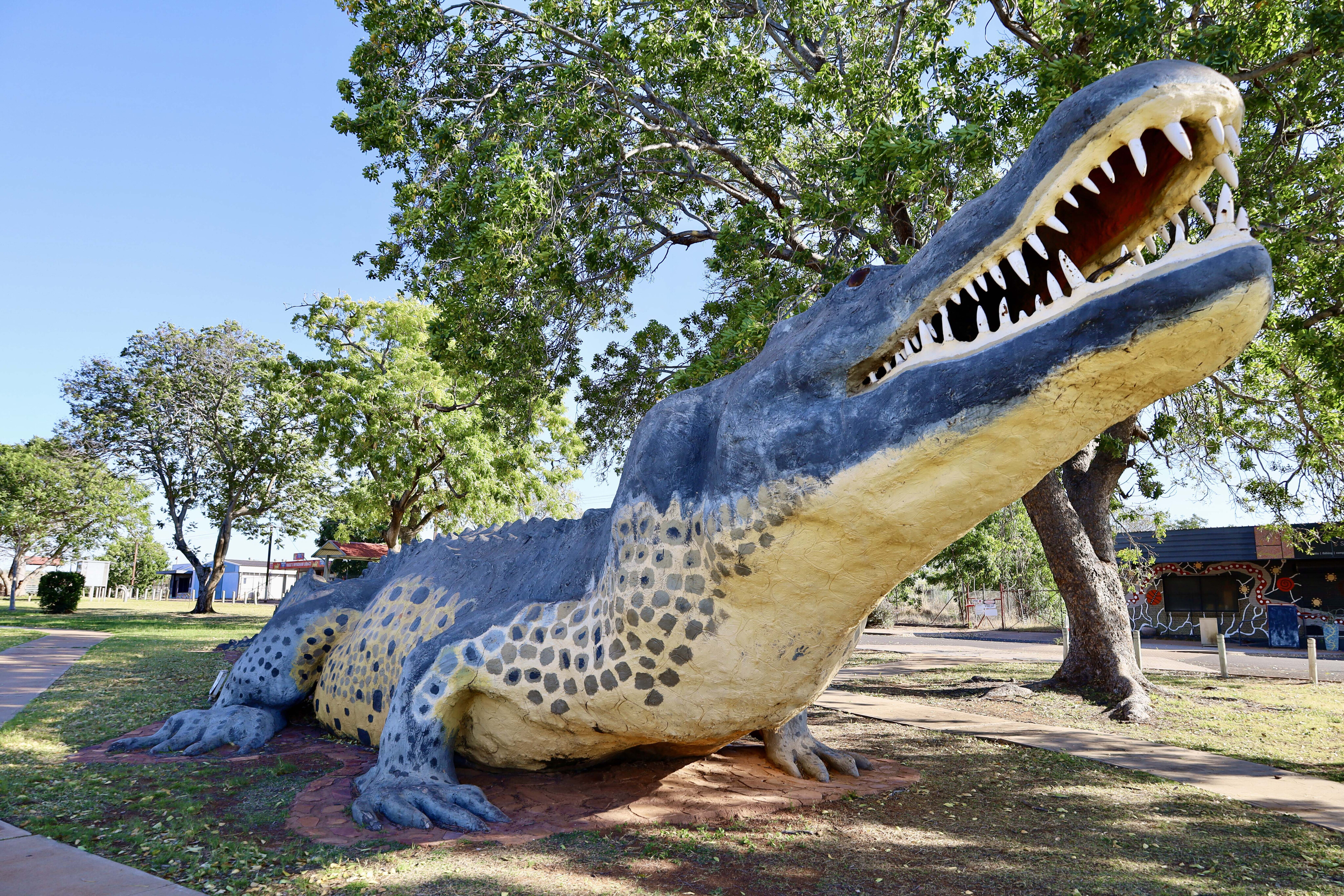
Exploring Kununurra
After a few days looking around Wyndham, I headed east along Parry Creek Road, skirting along the northern side of Ngamoowalem Conservation Park towards Kununurra, known as Kunnas to the locals.
This dirt road is a good alternative to the tar, and it’s about 90km to Kununurra, with several camping options along the way. Hairy Dogs Fishing Camp is situated on the Ord River and is perfect for those chasing Barra. Further towards Kunnas, a short 4x4 track leads you into Middle Springs waterfall and Black Rock Falls.
I was there late in the dry season and even though there was water in the pools, it wasn’t very inviting. I can only imagine the huge volume of water that would crash over the rocks into the pools during the wet season.
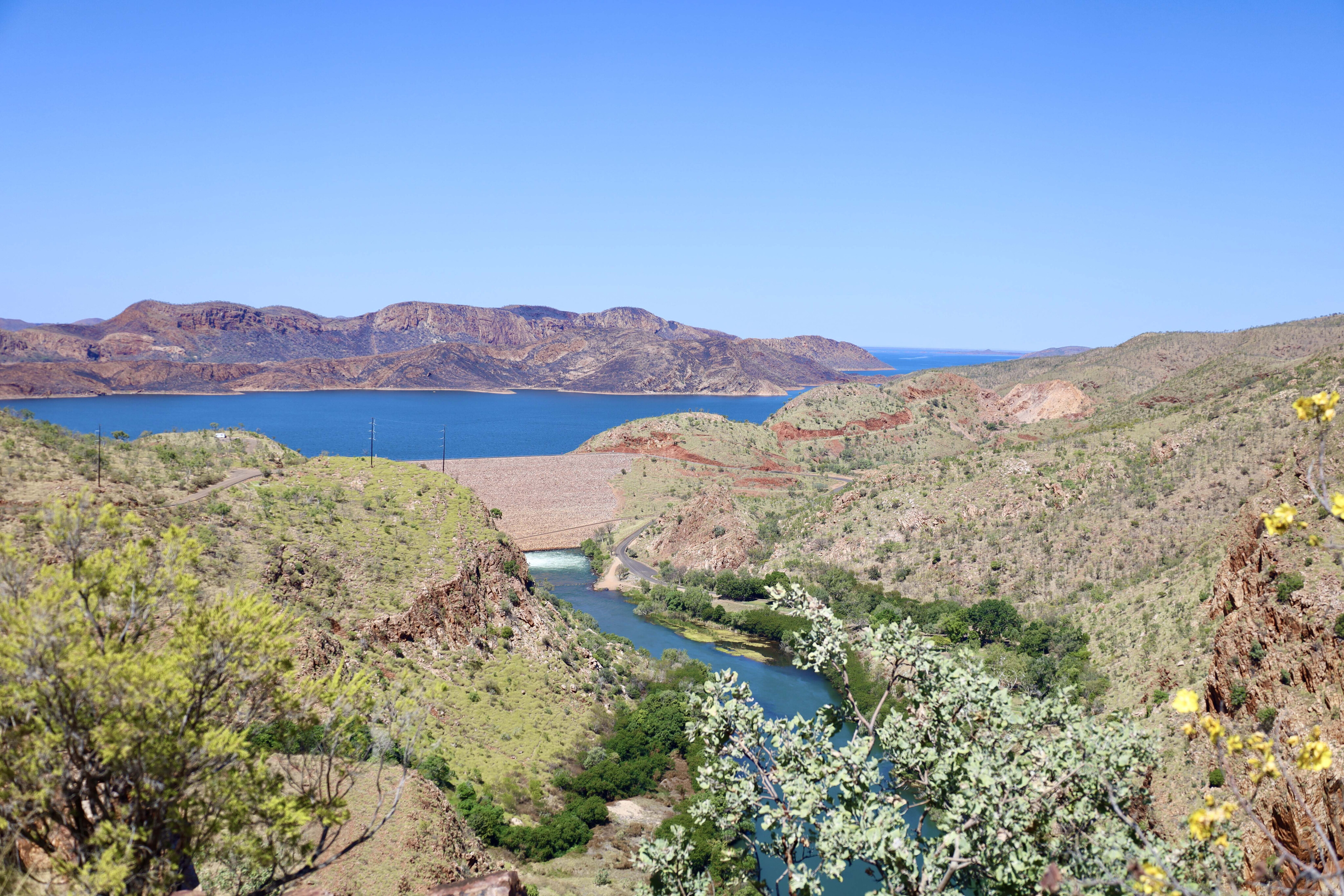
Buttons Gap is also on the Parry Creek Road and while not really noticeable as a major landmark, several tracks here lead down to the Ord River where free camping is permitted.
With nearly 4km of campsites, some of which are in a private setting, this is a beautiful spot to camp just outside Kununurra. But remamber, this is big saltwater crocodile country, so be vigilant when camping and fishing, and definitely don’t swim in the river.
Further on towards Kununurra is the infamous Ivanhoe Crossing. This long curved concrete causeway holds back water upstream from the Ord River Dam wall, and with a single lane road on top it’s an exciting drive across. Keen fishos throw lures and live bait around trying to hook a barra here, and going by the amount of fish scales on the rocks around the river back, many fish are caught.
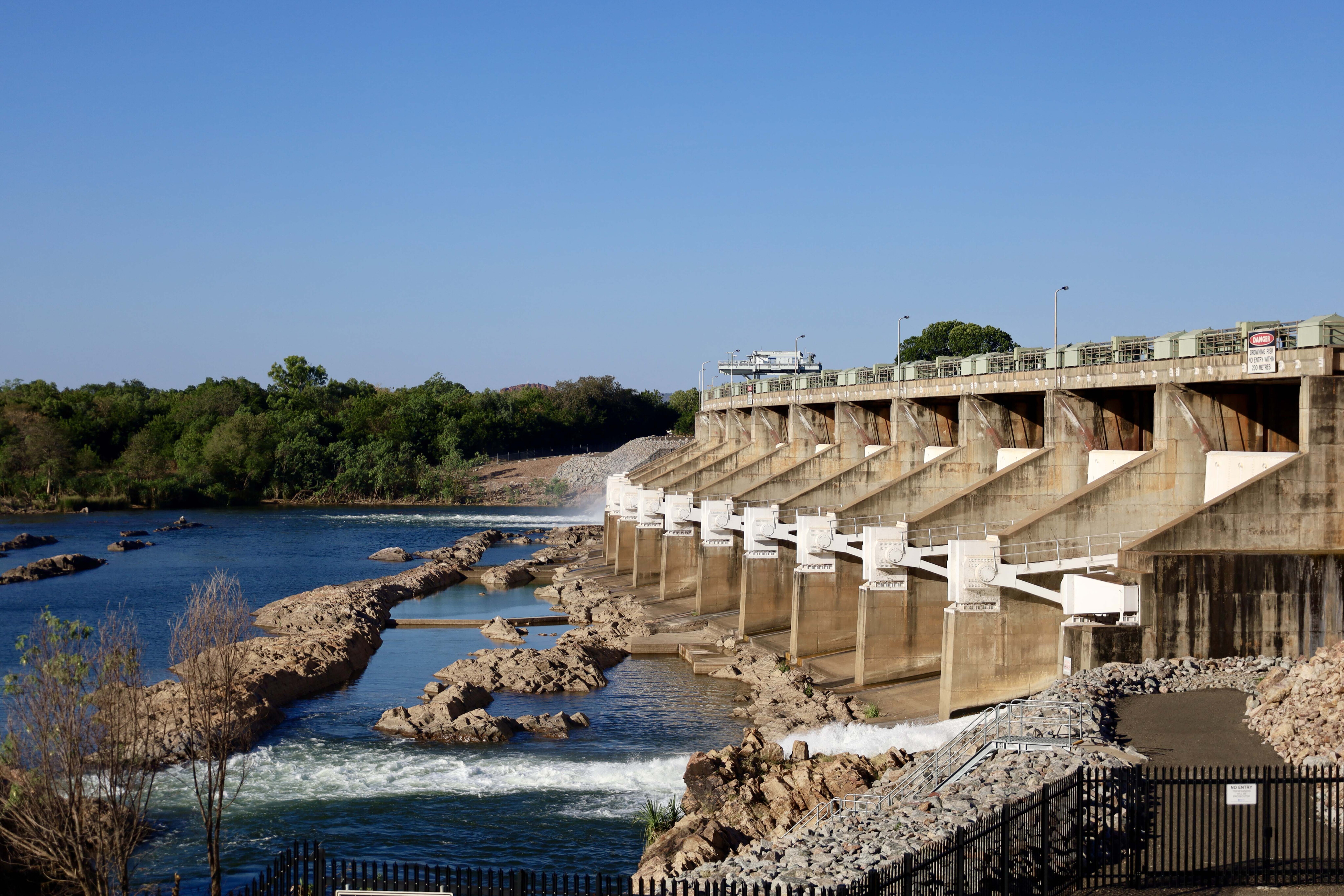
Head into town and you’ll discover that Kununurra is an interesting place where many cultures come together; with indigenous people, overseas fruit pickers and travellers all staying in town, it’s a busy place in the dry season.
Mirima NP, often regarded as the little Bungle Bungles, is only a few minutes to the east of town. The local Miriuwung people welcome visitors to walk around in Mirima to admire the towering eroded sandstone rock formations, and there are several walking trails.
The beehive-type rock formations date back millions of years and most of the trails lead you too lookouts or points of interest along the way.
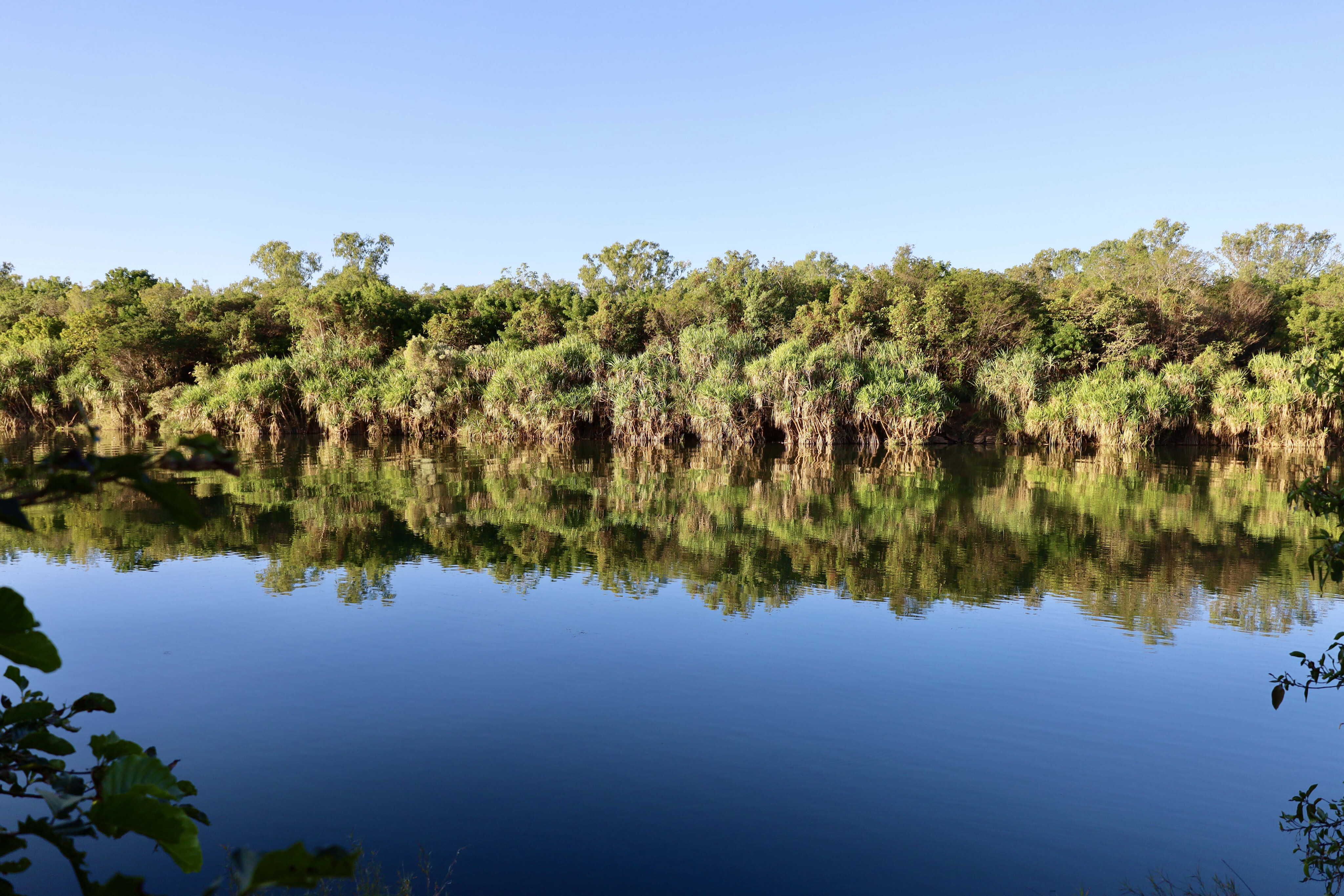
Kununurra is known as the food bowl of Western Australia, where crops and huge plantations of sandalwood trees grow in the fertile soil, and where abundant water is available from the Ord River irrigation scheme.
And speaking of water, no trip to Kununurra is complete without heading out to the massive Lake Argyle.
Spending time around Wyndham and Kununurra showed me just how much this area has to offer. Two things have stayed with me since my visit: one is that everything is huge up here and sometimes hard to capture through a lens, and the other is that I will be back for more as soon as I can.
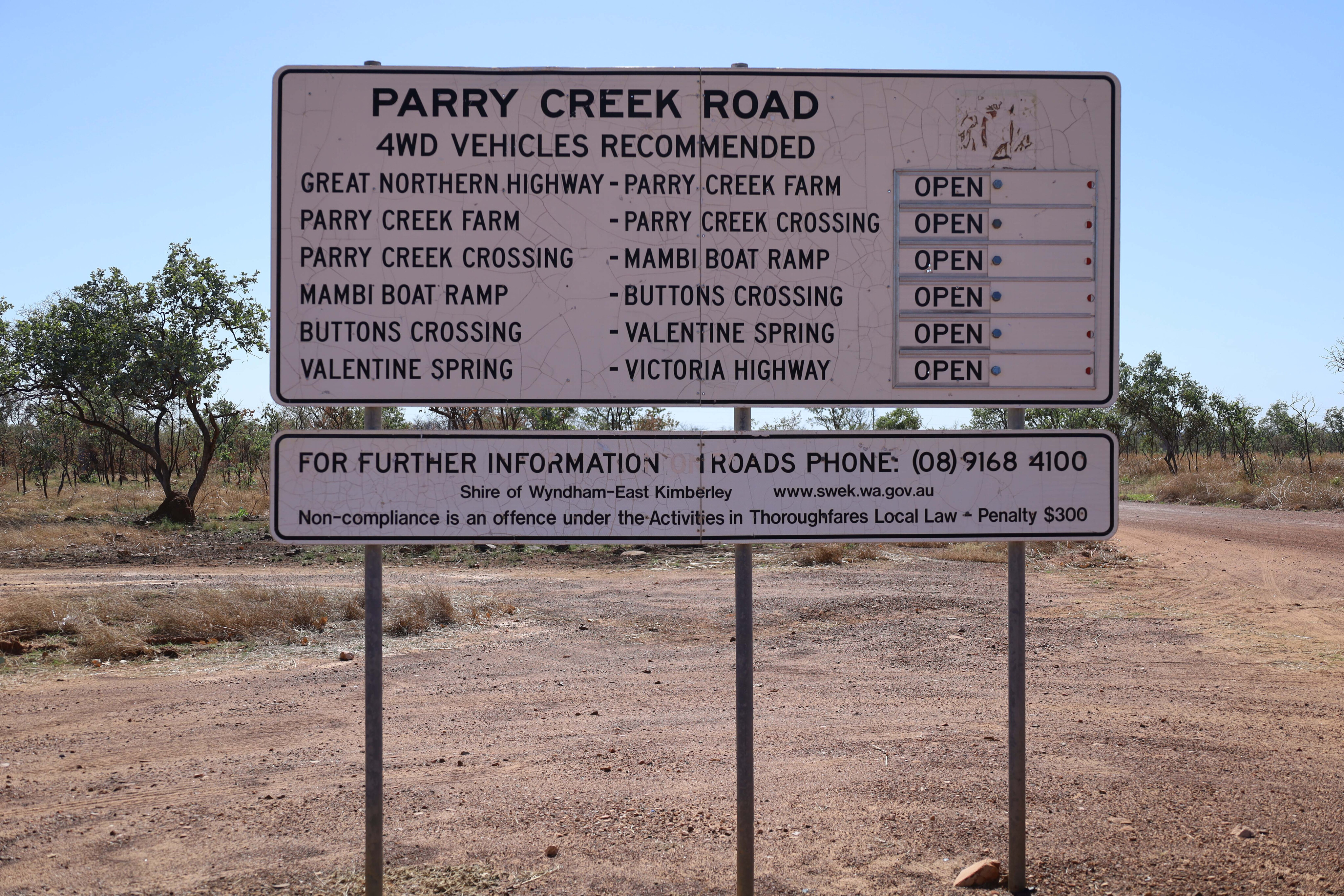
More information
Where is it?
Wyndham and Kununurra are in the East Kimberly in WA, and this area is regarded as the gateway to the Kimberley and the Gibb River Road.
Cut off during the wet season, the whole area comes alive during the winter months when tourists flock to here. Located nearly 4000km northwest of Brisbane, Wyndham is accessible by road and weekly flights. You’ll need a 4x4 to fully explore the area and its culture.
What can you see and do?
From 2000 year old boab trees and Aboriginal culture including stunning rock art and sites, through to European history and some of the best landscape features in the Top End, there is something here for everyone.
Time spent in Wyndham can be spent exploring the Five Rivers Lookout, old Wyndham town, several cemeteries around town and various natural wonders. Mirima NP is right in the heart of town, there’s great fishing and just out of Kununurra a day can be spent at Argyle Dam, either on the water or by visiting the many viewing points high above the waterline.
Midway between Wyndham and Kununurra is El Questro resort with its natural wonders including gorge walks, swimming holes and 4x4 tracks.
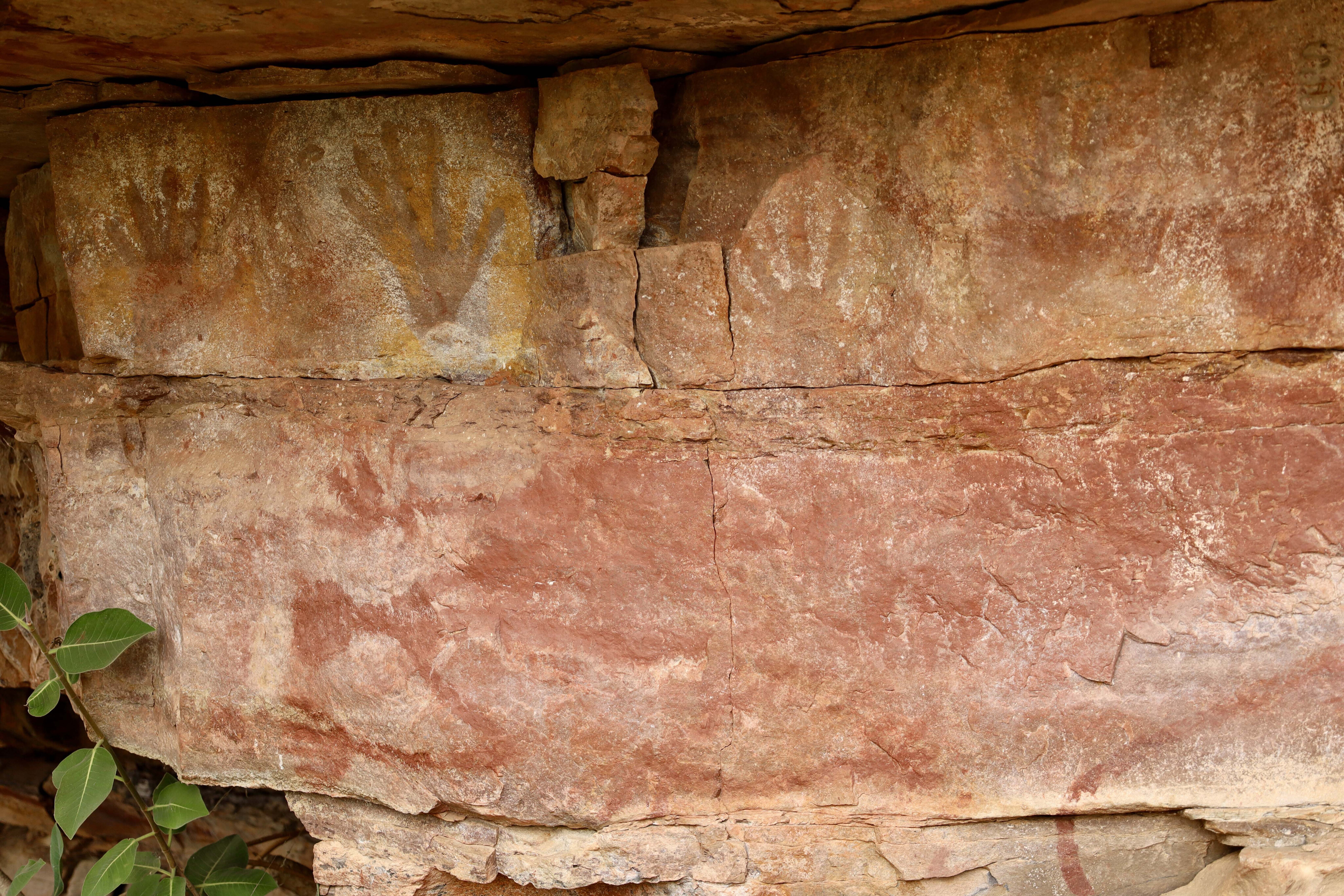
When and how long?
During the warmer months and wet season, generally from November through to March, the Top End becomes unbearable due to hot and humid weather. Heavy rainfall with the chance of cyclones often shuts the area down during these times.
A few days each at Wyndham and nearby Kununurra is enough time to explore most sites. To fully immerse yourself in the El Questro experience, you’ll need a week to wind down and relax.
There are plenty of camping and shopping options in the area. Information on seasonal closures, accommodation and activities in these areas can all be found online.

COMMENTS